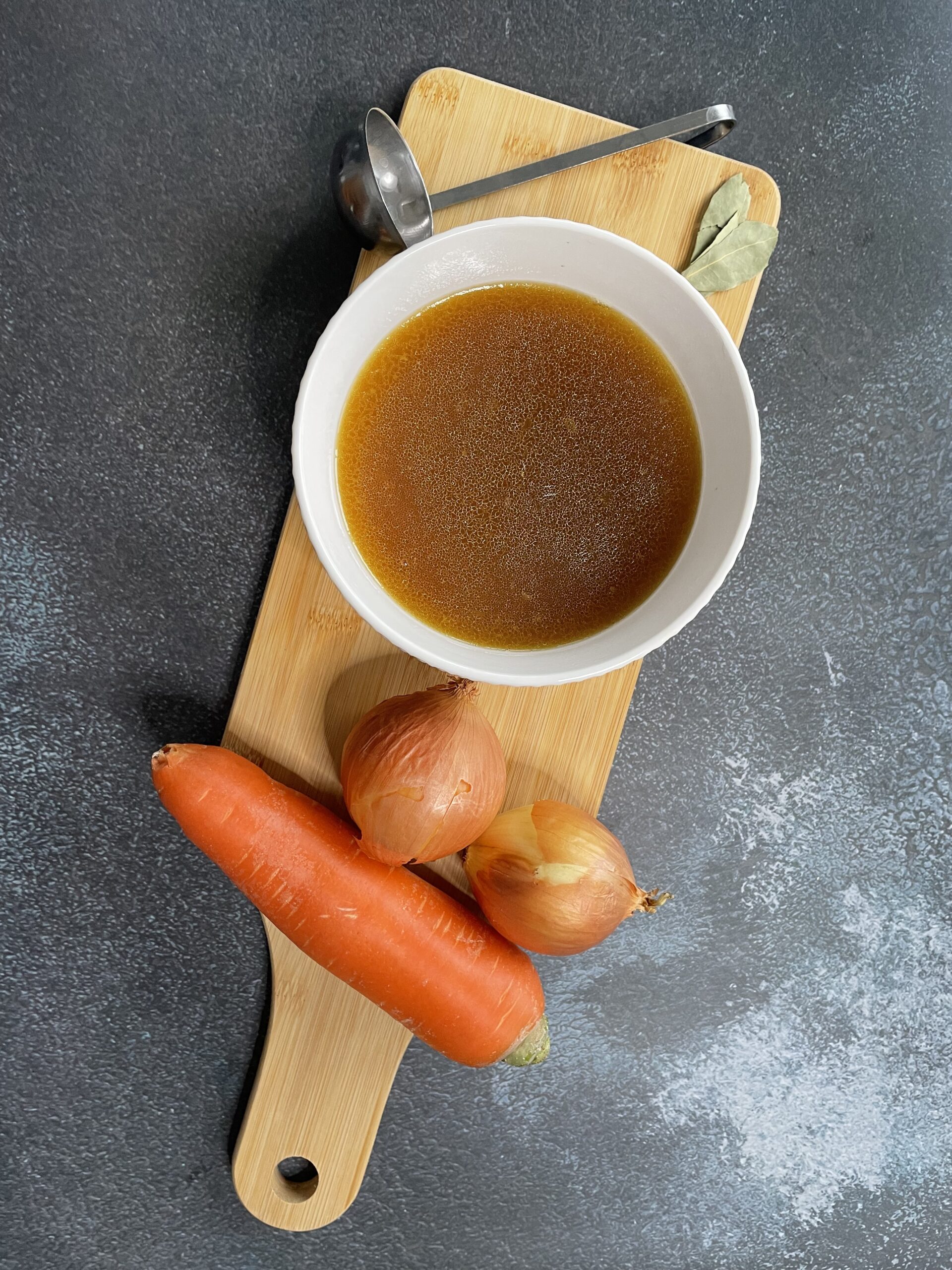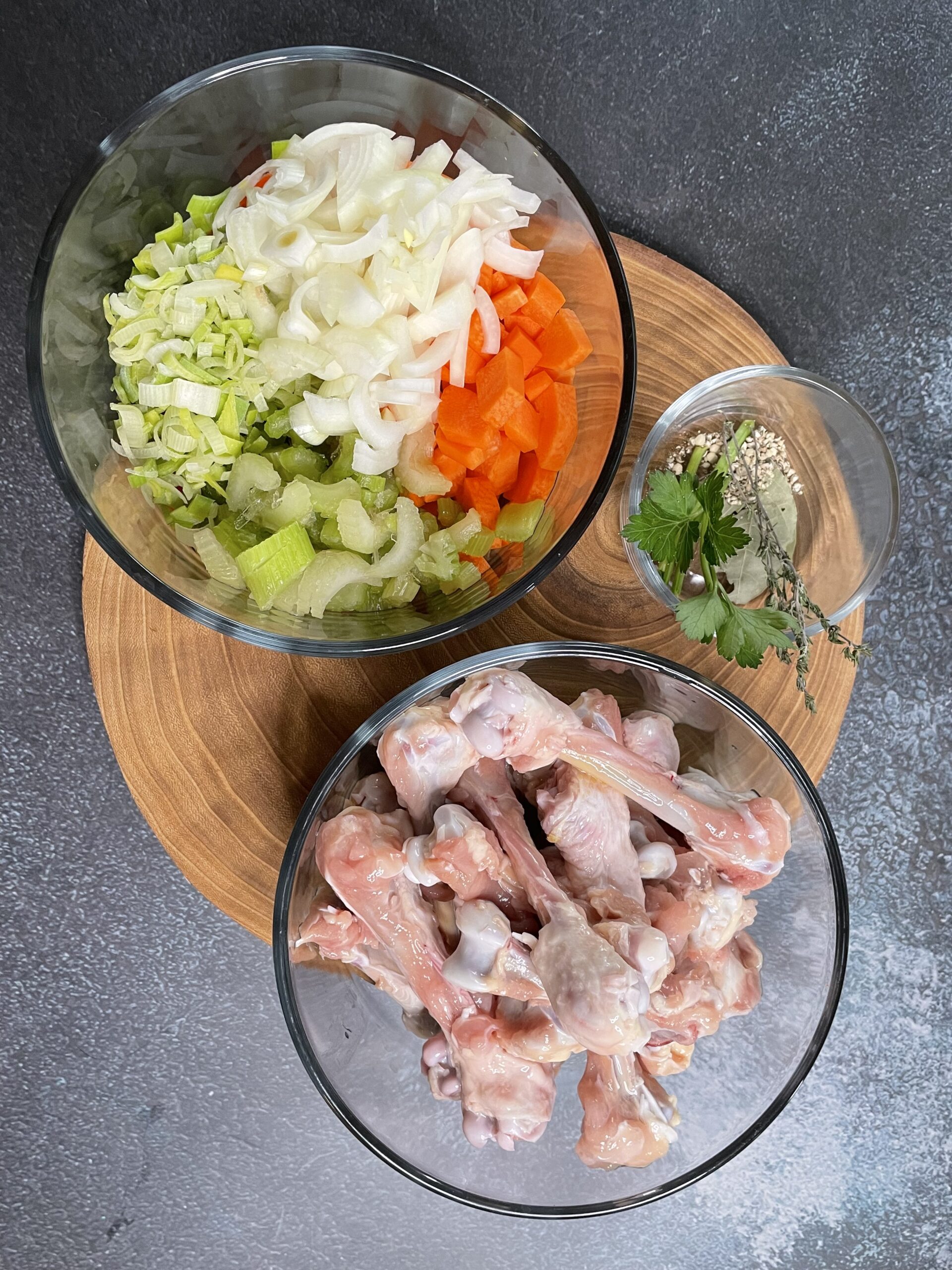Homemade Chicken Broth: My First Culinary Arts Class at George Brown College
Welcome to my next post! This is where I’ll be documenting my food adventures, culinary learnings, and experiences exploring Toronto and beyond. This also marks the first time I’m posting a video short. As I experiment with blogging and video content, I’m figuring out my style and striving to improve both my cooking skills and content creation.
To start, I enrolled in an introduction to culinary arts class at George Brown College to build my foundational skills. And what better way to begin than with the base of so many great dishes: chicken broth.

CUISINE
Essentials
Lesson One: Making Chicken Broth
Our first lesson focused on crafting a proper chicken broth, and one of the key takeaways was learning how to cut vegetables correctly. I’ll admit, I was a bit slow when dicing onions, carrots, and leeks. But with practice, I hope to gain more confidence and efficiency in my knife skills.
Beyond cutting techniques, I also learned the correct ingredient proportions:
- 100% water
- 50% bones
- 10% mirepoix (a mix of onions, carrots, and celery)
These ratios help create a balanced and flavourful broth without overpowering any single element. In the past, I wouldn’t have known how much bone, water, or vegetables to use, so this was an eye-opening lesson in consistency.
Definitions
To better understand the broth-making process, here are a couple of key terms we covered in class:
- Mirepoix: A classic French aromatic vegetable mix consisting of onions, carrots, and celery. It provides depth of flavour to stocks, soups, and sauces.
- Scum: The impurities, primarily fat and proteins, that rise to the surface when simmering a broth. Skimming the scum off ensures a clearer, cleaner-tasting stock.
Here’s My Attempt
Making the broth was a rewarding experience, but it was also a long process. The first challenge was keeping an eye on the scum that rose to the top and skimming it off regularly. This required patience, as a lot can accumulate over time. Once the broth was clearer you can add the mirepoix and let everything simmer for about three to four hours.
However, I wanted to experiment with a faster method, so I used a pressure cooker, which cut the cooking time in half. While this saved time, there were trade-offs—I had to wait for the pressure cooker to reach the right temperature and pressure, and adding additional ingredients like the spice sachet meant releasing the pressure, which took extra time.
Straining the broth was the final step. The result was a beautifully golden and aromatic chicken stock that I was proud of. From here, I could concentrate it further for storage in the freezer. Once I reached the desired concentration, I cooled the broth quickly in an ice water bath before storing it.

What I’d Like to Experiment With Next
While this was a great first experience, I’d like to test a few variations in my future broth-making attempts:
- What happens if I use only bones and no vegetables?
- Will it result in a purer chicken flavour, or will it lack depth?
- Roasting the bones before making the broth
- Will this enhance the depth of flavour and create a richer broth?
These are just a few things I plan to try out as I continue this culinary journey. Stay tuned for future posts where I’ll explore more recipes, techniques, and share my learning experiences.
If you’ve made chicken broth before, do you have any tips or favourite variations? Let me know in the comments!
Full Recipe in Details
Homemade rich golden chicken broth.
